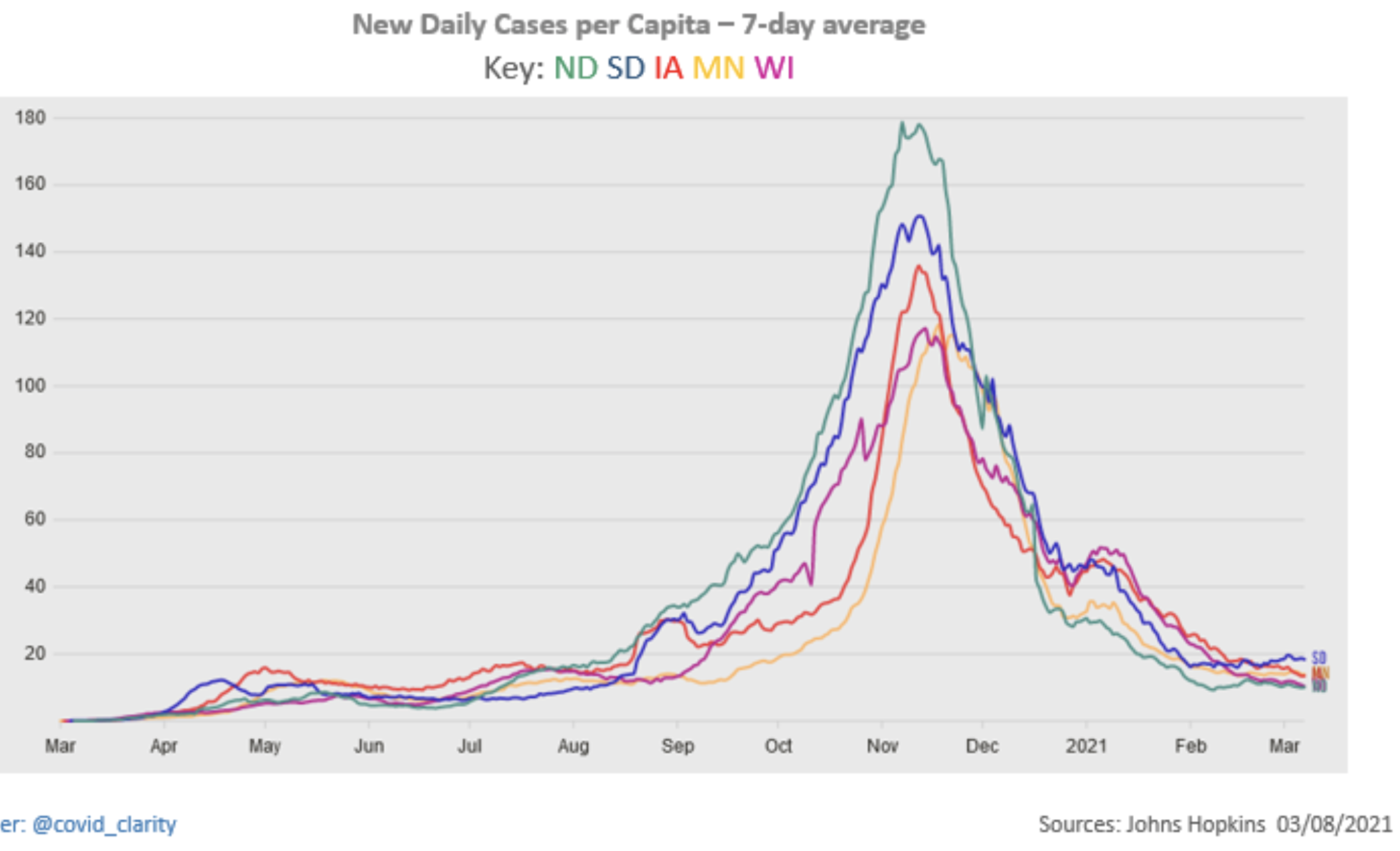I may have posted this before, but worth another look. From covidclarity on Twitter, the case curves in the Upper Midwest. Doesn’t much matter what you did.

I may have posted this before, but worth another look. From covidclarity on Twitter, the case curves in the Upper Midwest. Doesn’t much matter what you did.

The Healthy Skeptic is a website about the health care system, and is written by Kevin Roche, who has many years of experience working in the health industry through Roche Consulting, LLC. Mr. Roche is available to assist health care companies through consulting arrangements and may be reached at khroche@healthy-skeptic.com.

Thank you for the observation; however, my sense is the the intent of the intervention is to mitigate short-term number of cases overburdening the health care system. For example, ND shows a peak approximately 50% higher than the MN or WI, whereby they presumably applied harsher interventions. That being said, I agree with the similar timing of events being little different between states and interventions.
Don’t buy that excuse, Fred. Running millions of unnecessary tests didn’t overburden the health care system. And consider all the other incidents of people NOT getting routine health care out of fear. The only way to see the burden on the health care system would be to see total hospitalizations regardless of illness.
Seems the further north latitude the higher the peak for most part. Be interesting to divide Montana into east &west regions though sparse population may skew things
Scientific or Technical models are useful for two things. One is to predict new or future results which is what the public health community tried 90% of the time. The other and perhaps more important is to gain insight from how the models fail to reproduce the physical world. A competent modeler would try to see what factors were way off or incorrect. This helps guide improvements to these areas. So when most lockdown measures had none of the predicted results such as flattening the curve etc. one would expect to want to find out why and alter your actions. But since nothing except better drugs and new vaccines were helping, no political action except to promote them was justified. Somehow the Public Health guys were not really upto speed on modern genetic biochemistry advances, and looked 20 years back at AIDS and Ebola as references. Optimism for new vaccines should have been high and models run to reflect various timelines for vaccination and vaccination strategies.